Annals of Environmental Science and Toxicology
Synthesis and assessment of the bio pesticides from excerpts of tobacco, for the reduction of the agricultural pollution
Chitack Fokam Richard1*, Tcheumi Hervé1, Miantsia Olivier2 and Tzété Nathalie Sandrine2
2University of Dschang, Cameroon
Cite this as
Richard CF, Hervé T, Olivier M, Sandrine TN (2020) Synthesis and assessment of the bio pesticides from excerpts of tobacco, for the reduction of the agricultural pollution. Ann Environ Sci Toxicol 4(1): 058-063. DOI: 10.17352/aest.000028Agriculture uses big quantities of chemical pesticides nowadays. In the same way to their beneficial effects for the cultures, the pesticides express their ominous effects quietly on health and environmental. This work appears in a perspective of alternative research of treatments phytosanitary respectful of the environment in the control of the cultures. The general objective of this work is to propose some measures to reduce the use of the chemical inputs by the production and the assessment of the biopesticides from tobacco. They are produced by steepings, decoction and brewing. And their efficiency reveals that the excerpts possess the insecticide weeding effects and fungicides according to their concentration at the time of the application.
Introduction
Agriculture uses big quantities of artificial chemicals as manure, insecticide or herbicidal and as regulators of the growth of the plants. Insecticides and the herbicides are spread in the environment to fight against the bugs and the bad herbs. More of 2,5 millions of tons of pesticides are applied every year on the cultures of the planet in answer to the attacks of the cultures in field and to the storage [1].
In the same way to their beneficial effects in the defense of the cultures and the protection of the harvests, the pesticides express their ominous effects quietly on the human and environmental health [2]. Indeed, the active matter part contained in these pesticides that enter in contact with the organisms undesirable targets or that they ingest is valued to less of 0,3%, what is equivalent to say that more than 99,7% of the substances contained in these products phytosanitary leave “elsewhere” [3].
The W.H.O. estimates that 200 000 people are killed every year, in the world, consequently direct of the poisoning by pesticide [4]. Although in Africa the use of pesticides synthetic account only 2 to 4% of the world market of the pesticides, this continent continues to have the highest risk of human mortality associated to a bad use of the pesticides [5]. According to the PNUE (2011), in sub-Saharan Africa, the potential cost to take care of the illnesses bound to the pesticides between 2005 and 2020 could reach 90 billions of dollars.
The plants can provide some solutions spare potential to the agents currently used against the bugs, the mushrooms or the adventists because they constitute a source rich in chemicals bioactifs. A lot of effort has been concentrated therefore on the materials drifted of plant for the potentially useful products as commercial agents of struggle against the enemies of the plants [6].
To Cameroon in a general way and in particular in the city of Bafoussam situated in the west region, one notes an exponential increase in the use of the chemical inputs for agriculture exposing the agriculturists as well as the consumers to numerous risks of contamination and the risks of pollution for the environment. Indeed during the last 10 years the number of boutique of sale of chemical pesticides doubled to see triplet. So although the majority of the convenient population only the agriculture of subsistence, all are thrown themselves body and soul in the use of the chemical pesticides. Besides, one notes a big diversity floristique in the region and for the more part of these plants, they don’t have a very big importance in the daily life for the some and for others, they are considered like harmful plants. Assuming that some plants produce the active substances having the insecticide properties, fungicides, herbicides or regulating of the growth of the plants (Bertrand, 2013).
It is question for us in this work to propose some measures to reduce the use of the chemical inputs through the production and the assessment of biopesticides from tobacco. More specifically, it will be question for us to produce the excerpts of tobacco plants; to achieve tests of the effect weeding the excerpt fermented pure of tobacco on a population of adventist; to achieve tests of efficiencies of the excerpts diluted in field of medicinal plants.
Material and methods
Plant material: Tobacco
To the origin, this plant comes from north America and the south. The culture of tobacco finds its origin in America, there are more than 500 years [7]. When Christopher Columbus meets the Indians, these to take care of themselves roll leaves of tobacco as far as getting a sort of big cigar that they call” tabaco “. The face 1 presents us the plant and the leaves of tobacco and the picture 1 presents that systematic Figure 1, Table 1.
Preparation of the aqueous excerpts of the plants
It is possible to reinforce the resistances natural of the plants thanks to preparations to basis of plants. These substances act in a varied manner: by repulsive, toxic effect or while stimulating the defenses natural of the plants a little as the vaccines. Four returns are generally used to know the simple steeping, the prolonged steeping, the decoction and the brewing. All these preparations have been achieved to the concentration of 100g/l.
Different plants targets to achieve the tests
The present picture 2 all plants on which we achieved our experiences Table 2.
Assessment of the efficiency of the excerpts
Test on a population of Adventist: For the tests on the adventists, we used a parcel within Bio-nature covered in majority by about 250 plantations of bidens pilosa (Grass to needles). On this parcel, we used the excerpt fermented pure.
Test in garden of medicinal plants: For the tests in medicinal plant garden, we used a device composed of distributed three shares like follows.
➣ Lot 1: composed of 100 feet of thistle blessed, all attacked by bugs. This share has been treated with the help of excerpt fermented of dilute tobacco to 20%.
➣ Lot 2: composed of 86 feet of Senna occidentalis all attacked by mushrooms. This share has been treated by excerpts fermented of tobacco 30%.
➣ Lot 3: composed of 38 feet of capucyne undergoing attacks of bugs. This share has been treated by a dilute tobacco decoction to 20%.
It is important to specify that all these shares have been followed during ten days.
Results and discussion
Synthesis and extraction of the tobacco excerpts
The set of the plants has been collected, then we conducted the preparation of the different excerpts. The results of these different preparations are presented in the picture 3. And the real lengths of every preparation are presented in the picture 7 Table 3.
Survey of the efficiency of the excerpts on the different parcels
The excerpts used in this part are manure and the decoction of tobacco. The other preparations as the brewings of tobacco, and the simple steeping of tobacco didn’t present a meaningful result in the treatment of the plants. Indeed, for what is the brewing and the simple steeping of tobacco, we noticed that the color of the preparation was not marked very what lets us believe that, this preparation was not loaded enough in active principle as Michel affirms it some 2005.
Efficiency of the excerpt fermented pure of tobacco on a population of adventist
In order to be able to test the effect weeding the excerpt fermented pure of tobacco, we used a parcel within bio nature covered with a species of adventist named Bidens pilosa or Grass to needles. Indeed, the grass to needles is one of the adventists the more rependunt in the west Cameroon; she is as well present in season of rains that in dry season.
The parcel covered of grass to needle has been irrigated by the excerpt fermented of tobacco without dilution. 24 hours after the pulverization, we observe the first flowers of the plant to fade. The death of the first plants appears toward the third day, and at the end of 8 days the set of the population of grass to needle disappeared as the face presents it 2 Figure 2.
The manure of tobacco or excerpt fermented of tobacco, when it is pulverized without dilution provokes the death of the plants. Indeed, after pulverization of the excerpt fermented of tobacco one observes a death of the plants by necrosis (rot). This result is in adequacy with the works of Lefebvre, et al. [8] notably when they affirm that some plants possess some substances capable to inhibit the growth of other plants to provoke their necrosis either. This result also corroborates with those of Delabays and Mermillods [9] notably when they affirm that the phenomenon of allélopathie observed at some plants can be exploited in agriculture to fight against the bad herbs. The present face 3 the evolution of the number of dead plants in the population of herbs to needles during the time Figure 3.
The Figure 3 presents the evolution of the effect during the time of the excerpt fermented of pure tobacco on the herbs to needles. Here, one can observe since the third day the beginning of the death of the herbs to needles. At the end of 8 to 9 days one notes a complete disappearance of the herbs this for an efficiency of 100%, what joins the works of Provendier [10], when he/it affirms that the excerpts hydro alcoholic of some plants, when they are pulverized without dilution, can drag the death of the totality of the plants in a middle [11-15].
Efficiency of the excerpts diluted in fields of medicinal plants
We tested the efficiency of our different excerpts diluted on plants to medicinal use left in 3 shares.
Efficiency of the excerpt fermented of dilute tobacco to 20% on the lot1
The share 1 is constituted of thistle blessed undergoing attacks of bugs. These attacks appear by perforations of the leaves of the plant in a first time followed by the necrosis of the leaves attacked. This parcel has been treated by the excerpt fermented of dilute tobacco to 20%. Three days after the beginning of the treatment, one can already note the efficiency of this excerpt that begins to stop the attacks. At the end of six days, the attacks are stopped this completely for an efficiency of 100%. Therefore the manures of tobacco have an insecticide effect. The present face 4 the evolution of the treatment during the time Figure 4.
Besides, besides this insecticide effect, we also noted a stimulation of the growth after ten days of observation. Indeed, ten days after the treatment we observed a better development of the surface foliaire of the thistle feet blessed treaties and in more a végétalisation of the surface treated. This result joins the works of Bernard, et al. 2003 to the term of which they affirmed that the manure of the plants as the nettle, tobacco and well of others, constitute a real green manure, 7 times richer in nitrogen, 3 times richer in phosphor and 5 times richer in potash that the manure of cow. The present face 5 the pictures of the thistle blessed before treatment (a) and 10 days after the treatment (b) Figure 5.
Efficiency of the excerpt fermented of dilute tobacco to 30% on the lot2
The share 2 is constituted of plantations senna occidentalis undergoing all of the attacks of mushrooms. These attacks appear by the scalding of the leaves in a first consistent time of a progressive drainage of the leaves of plantations attacked. This share has been treated by the excerpt fermented of dilute tobacco to 30%. Three days after the treatment, we noted a reduction of the attack and at the end of 7 days, all attacks stopped from where the effect fungicide of the excerpt fermented of tobacco with an efficiency of 100% when it is diluted to 30%. The present face 6 the evolution of the treatment during the time and the face 7 shows the plantations of senna occidentalis before the beginning of the treatment (a) and six days after the treatment (b) Figures 6,7.
However, it is important to specify that, although the treatment is efficient to 100%, ten days after the treatment, we noted the necrosis of the leaves of some plantations. Indeed, on the 80 feet treaties, we observed that the leaves of 13 feet have been canker and the 67 feet present a change of structures them the leaves that became slightly offended. This aspect of the leaves is caused by the excerpt fermented of tobacco. This gotten result is different from the results of the works of Lisan [7] notably when he/it affirms that for the excerpt fermented of dilute tobacco to 30%, in addition to her effect fungicide possesses beneficial effects in the growth of the plants for its strong concentration in nitrogen. This difference in the results can explain itself by the fact that, Lisan used the excerpts diluted to 30% for the treatment of the fruit trees attacked by the mushrooms, whereas we used our excerpts on young plantations of senna occidentalis.
Efficiency of the dilute tobacco decoction to 20% on the share 3
The share 3 is constituted of the feet of capucines undergoing attacks of bugs. These attacks appear then by a perforation of the leaves of the plant a progressive yellowing of the leaves punched their drainage then. This share has been treated by an excerpt of decoction of the leaves and stems of dilute tobacco to 20%. This excerpt showed its efficiency while beginning to stop the attack since the second day. 6 to 7 days after the beginning of treatment, the totality of the attack stopped, this for an efficiency of 100%. The present face 8 the evolution of the treatment during the time Figure 8.
Besides the insecticide effect, we also noted an effect of stimulation of growth of the feet of capucines. Indeed, 10 days after the treatment, all feet of capucine treaties presented a better development of the surface foliaire and a good levee of the plantations. This result is contrary to the results of Michel’s works, (2005). For this author, the heat reduces to see destroyed the active substance contained in the plants responsible for the insecticide effect or fungicide and cannot contribute to the good growth of the plants therefore. This difference in the results can probably explain itself by made it that Michel worked him on plants as the nettle however, we worked with tobacco. The present face 9 the plantations of capucine before the treatment (a) and 8 days after the treatment Figure 9.
Conclusion
In conclusion it was question for us to produce and to value the biopesticides from the excerpts of tobacco. To arrive there us made the simple steepings, prolonged steepings, the decoctions as well as the brewings. The excerpt fermented of tobacco, when it is measured out to 100%, it presents an effect weeding with an efficiency of 100%. The survey of the efficiency of the excerpts of tobaccos revealed us that tobacco possesses an effect weeding. We also followed the insecticide effect of these excerpts on the experimental parcels. it comes out again that, tobacco is very efficient in struggle against the attacks of bugs but of by its action weeding when it is used in struggle against the bugs it can have an effect on the growth. it agrees all the same to specify that the replacement potential of the synthetic pesticides is all the same variable, because the real efficiency of these preparations to basis of plants depends, of several factors, between other age and the site of harvest of the plants selected, of the preparatory fashion and the conditions of applications. In comparison with the synthetic pesticides, they offer real advantages in this sense that they are biodegradable and don’t lead a resistance at the bioagresseurs.
- Popp J, Petö K, Nagy J (2013) Pesticide productivity and food security. A review. Agron Sustainable Dev 33: 243-255. Link: https://bit.ly/2WU2HXJ
- Gomgnimbou A, Savadogo P, Nianogo A, Rasolodimby J (2009) Usage des intrants chimiques dans un agrosystème tropical : diagnostic du risque de pollution environnementale dans la région cotonnière de l’est du Burkina Faso. Journal Biotechnol Agron Soc Environ 13: 499-507. Link: https://bit.ly/2L2S5Dt
- Gasquez J, Fried G, Délos M, Gauvrit C, Reboud X (2008) Vers un usage raisonné des herbicides : analyse despratiques en blé d’hiver de 2004 à 2006. Newspaper Agronomic Innovations 3: 145-156. Link: https://bit.ly/3ptSv4o
- Anjarwalla P, Belmain S, Sola P, Jamnadass R, Stevenson PC (2016) Guide des plantes pesticides. Rapport World Agroforestry Centre (ICRAF), Nairobi, Kenya, 63. Link: https://bit.ly/3aTZdg0
- Williamson S, Ball A, Pretty J (2008) Trends in pesticide use and drivers for safer pest management in four African countries. Crop Protection 27: 1327-1334. Link: https://bit.ly/34WPvWx
- Awad M (2012) Les Biopesticides : une recherche fondamentale vers une valorisation industrielle. University Saint- Joseph. Faculty of the sciences. Report 22.
- Lisan B (2016) Fiche présentation plante : Nicotiana tabacum (Tabac). Scientific magazine 10.
- Lefebvre M, Leblanc M, Tellier S, Gilbert P (2012) Utilisation de plantes aromatiques comme désherbant en production végétale biologique. Newspaper agriculture, fisheries and food Québec 3. Link: https://bit.ly/34WSnma
- Delabays N, Mermillod G (2002) Phénomènes d'allélopathie : premières observations au champ. Swiss magazine of agriculture n° 34: 231-236. Link: https://bit.ly/38Pu5vy
- Provendier D (2005) Des "herbes" pour limiter l'utilisation des herbicides. Revue vivre la vigne en bio / vini vitis bio n° 25/26, 11-13
- Ahouangninou C, Fayomi E, Martin T (2011) Évaluation des risques sanitaires et environnementaux des pratiques phytosanitaires des producteurs maraichers dans la commune rurale de Tori-Bossito (Sud-Bénin). Journal Cah Agric 20: 216-222. Link: https://bit.ly/34U2dFk
- Bertrand C (2008) Bio-Pesticides Organiques d’Origine Naturelle. Université de Perpignan –Via Domitia. Chemistry laboratory of the Biomoléculeses and the environment. Report 21.
- Caussanel J (1975) Phénomène de concurrence par l’allélopathie entre adventices et plantes cultivées. Report 18.
- Delabays N (2005) L'allélopathie et son utilisation en agriculture biologique. Journées techniques fruits et légumes et viticulture biologique 25-33.
- Kemassi A, Boual Z, Lebbouz I, Bouhoun M, Saker M, et al. (2011) Étude de l’activité biologique des extraits foliaires de cleome arabica l. (capparidaceae). Lebanese Science Journal 13: 17. Link: https://bit.ly/3b0HQKu
Article Alerts
Subscribe to our articles alerts and stay tuned.
 This work is licensed under a Creative Commons Attribution 4.0 International License.
This work is licensed under a Creative Commons Attribution 4.0 International License.
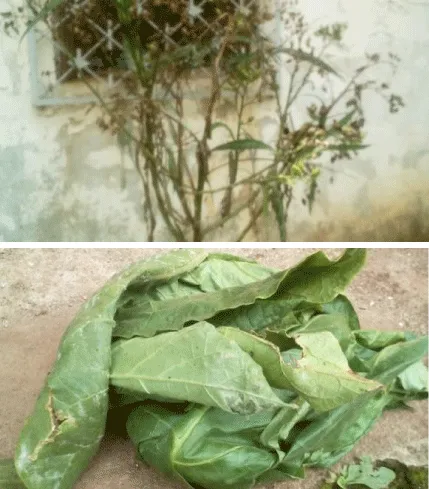
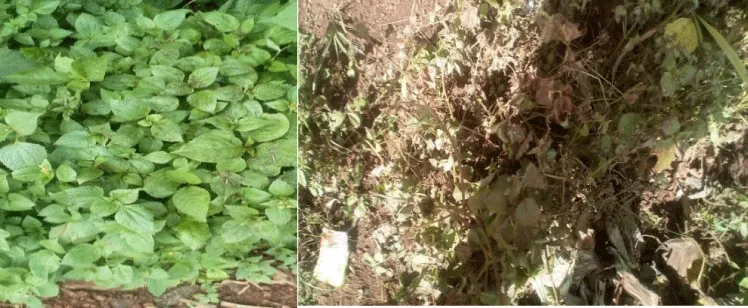
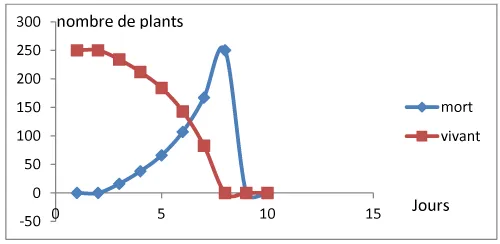
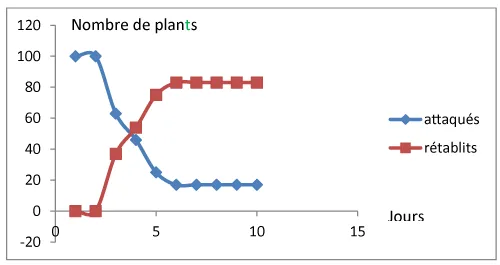
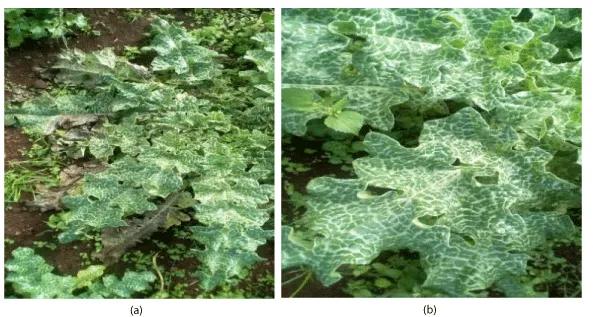
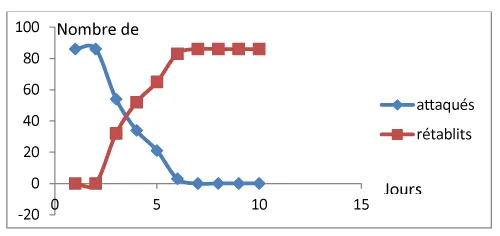
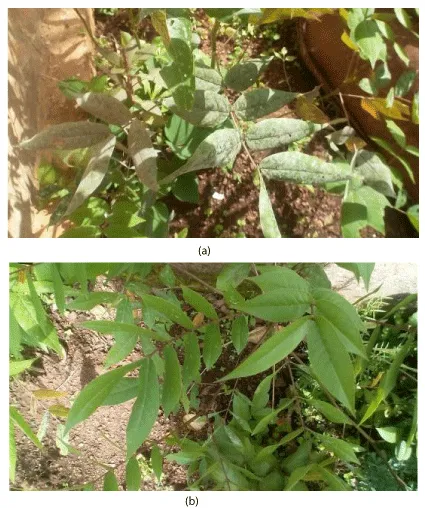
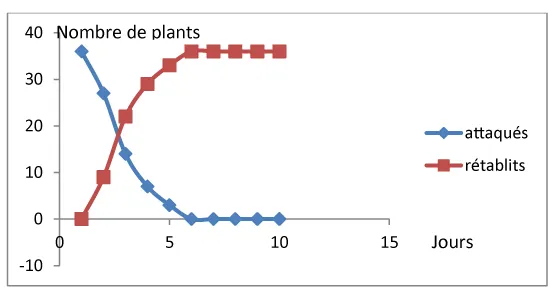
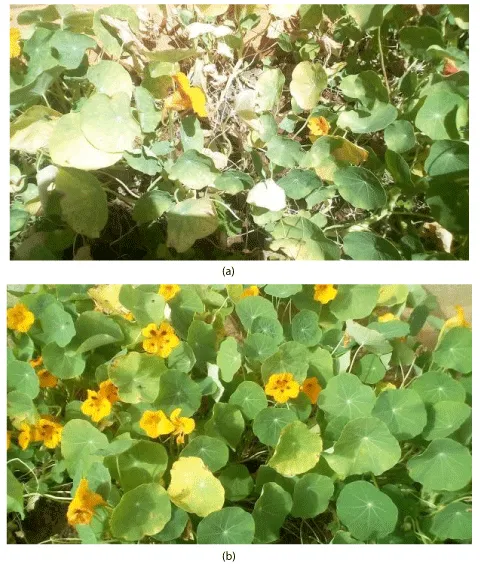

 Save to Mendeley
Save to Mendeley
